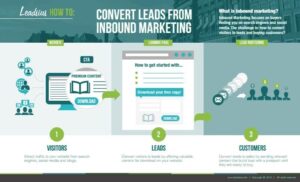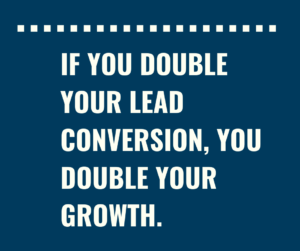Content analytics: measure, adjust, and improve

You know content can help you leverage your time and educate people new to your business or brand. But how do you define your “content analytics” – ya know, how your content is performing and how you should adjust?
If you’re looking to determine
- Whether your content is getting a good return on investment,
- How your content is linking back to sales and growth of your business, and
- Where to spend more or less of your time and energy in your marketing,
Content analytics will give you the answers.
To help with your pillar content process, I’ve created a “pillar content toolkit” of 5 FREE resources to help speed the process along, including a PDF copy of this entire guide. Cement what you learn and grab the toolkit here.
(Or grab it by clicking this link)
Why measure your results?
Content marketing is like a flywheel. Once you get it to start spinning effectively, the momentum generated gets you inspired to keep going.
(Hubspot has a great piece here about taking a “flywheel” mentality.)

It’s not unusual for a piece you’ve produced to deliver you new leads months or even years after it’s been published.
The challenge, though, with content marketing is that it’s a grind to get started, especially if you haven’t used any previous content marketing efforts.
It can feel like you’re pouring in hours of time (or money and resources if you have outsourced production); you want to be able to see progress and have a way to measure return on investment from your actions.
When you have measurements in place, you’ll be able to more effectively monitor your progress and continue to plow forward with more effort than ever before.

3 high-level content analytics everyone should know
A common group of metrics in content marketing are known as TLC; they stand for Traffic, Leads, and Conversions.
Traffic is how many people are visiting your site or your content. You could have a brilliant piece of content, but if no one is seeing it, you won’t grow.
Leads are how many people who see your content take the next action.
The action that defines becoming a lead is up to you; two common lead generation measurements are number of new email subscribers or number of inquiries.
Conversion refers to how many people reach an important checkpoint in the marketing process. This step could be the same action as leads, and it depends on what you want to measure.
Another way to think of these stages of inbound marketing could be “Visitors, Leads, Customers” as shown in this infographic.

When you’re tracking these three categories with your own unique business metrics, you’re able to identify where you’re losing prospects along the way.
Improving any of your numbers – traffic, leads, or conversions — will result in more sales opportunities for your business.
If you aren’t tracking, however, you won’t know what to change!
Measure traffic with Google analytics
We mentioned Google Analytics in the previous chapter of this guide. If you want to measure your improvement in traffic, you must have a way to track visitors to your site or your assets.
Without traffic, nothing else works. Traffic is what provides food to all the other marketing arms of your business.

Capture leads and subscribers with opt-in boxes
It’s nice to have traffic come through and consume your content. If these users are new to us, we want to encourage them to get to know us better by “opting-in” to our list.
The average opt-in rate of a website is 1-5%. The opt-in rate on pillar content, however, is often much higher, especially if your opt-in bribe is linear to the content itself.
An opt-in box or bar, such as one provided throughout this guide, will give metrics for both how often it is shown and what percentage of users go through it.
Here is a pillar content opt-in bribe for a guide of mine, commanding a 16% opt-in rate on traffic in the given time window.

You can create an opt-in box through your email service provider.
Another option is to use landing page software for your opt-in boxes. I personally use LeadPages and love using them for all my opt-ins and sales pages.
If tight clean opt-in metrics and sales pages are of interest to you, consider giving LeadPages a whirl. While it isn’t free, the value of knowing the effectiveness of your marketing is priceless.
If you’re getting terrific traffic, but converting a very low percentage of your traffic onto your list, it’s time to address your lead generation strategy.
Think about it – if you can improve this “middle of funnel” stage of your marketing, you could substantially grow or even double (or more!) your growth.

Look for ways you can convert a larger percentage of your traffic into leads.
Measure conversion with sales metrics
As we’ve said before, conversion can mean many things.
For most business owners, however, conversion is what percentage of your email subscribers go on to book a call with you or buy something from you.
It’s important to look at the process your new leads go through as they move toward converting or not converting.
Do your prospects get enough information about why their problem is a problem, as well as how to fix it?
As I wrote in this post on Medium, there are 4 questions you must answer in your marketing process:
- Should someone do anything at all?
- Why should someone take this approach?
- Why should someone take this approach with you?
- Why should someone take this approach with you now?
If your lead does not clearly know the answer to one or more of these questions, you’re probably leaking conversion and sales potential.
Plug your leaks with supplementary content that answers those questions.
Other content analytics to measure
The metrics above are an examination of how consumers are interacting with your content.
But you may want to keep your laboratory coat on and also measure how much time and energy it takes to produce pillar content so you can plan ahead.
Here are a couple “personal productivity” categories that you may also want to put under the microscope.
Content production
Take a good look at how much of your time is being spent on pillar content versus how much of your time goes to promotional content such as social media that actually has a very short half-life.
This guide is on how to create pillar content because pillar content can give you returns in the long run.
It’s good to have a balance of pillar content (content you can reuse) and social content (relevant, timely snippets to use on different platforms).
I’ll give an example: years ago — years! — I wrote a piece of pillar content on how yoga studios can use Facebook ads to create awareness campaigns on small budgets for their existing clients.
This guide, which had a content upgrade, continues to net me new subscribers each week. While I’m asleep or working on other tasks, I’ll intermittently receive an email notification that looks like this:

I wrote this piece over three years ago.
So while it took more time and energy to produce that guide upfront, I’m continuing to get interested leads from it for free.
Imagine what would happen if you had multiple pieces of content doing this for your business each day.
Content repurposing
Whenever you have produced content, it’s helpful to go back over it and brainstorm how you can refer back to it in a different way.
If you are producing deeper, more researched content, you’ll have more to work with.
For example, even in the section you are reading right now, I could extract this chunk of content into its own post or status update.
I could write about things like
- “How to increase your email open rates”
- “Which types of opt-in bribes get the best conversion rate”
- “How long to wait before asking a new subscriber to buy something”
And so on.
Get your creative gears going on how you can repurpose the content you have already taken the time to manufacture.
—
Your pillar content is a cornerstone of your marketing approach, and its content analytics will help guide you to make better business decisions.
Sometimes, though, rather than produce new content all the time, it may be smarter to add to the content you already have to make it even more robust and effective.
So in the final chapter of this guide, I have some suggestions and tips on what to do to take your pillar content to the next level for even better results.

